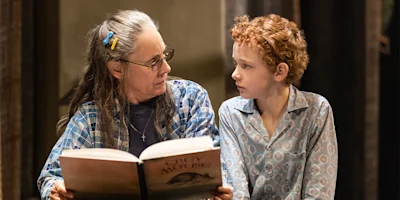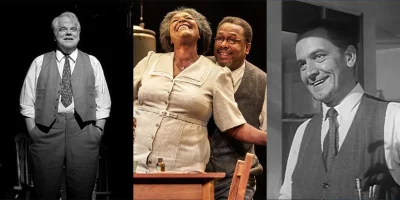1949
1949
Death of a Salesman was all but an instant classic when the show premiered at the now-demolished Morosco Theatre on Broadway. Opening night was on February 10, 1949, and after rave reviews, the show ran for 742 performances in just under two years. Miller himself was heavily involved in the production: Jo Mielziner designed the sets and lighting to his precise specifications. In his vision, the walls of the Loman house were transparent, and you'd know whether a scene took place in the present or the past depending on whether the characters were walking through or around the walls. Miller also wanted softer, warmer lighting for scenes in the past than in the present.
One way the production differed from his vision, however, was in its lead casting. Miller envisioned Willy as a physically small man, to emphasize the large weight of the world and his failings on him. But every auditioner besides Lee J. Cobb, the burly man who was eventually cast, "seemed to lack the size of the character, even if they fit the body," Miller wrote in his autobiography Timebends. He and director Elia Kazan — yes, the Hollywood legend — called Cobb the "walrus" and eventually added that descriptor into the script.
Miller wasn't sold on the casting at first, complaining that Cobb's delivery was more reserved than everyone else's in rehearsal. But as the story goes, Cobb suddenly came out of his shell one day, and his performance "clicked" for everyone in the room.
In the years since, Cobb's grand performance has become iconic, influencing all the Willys that have come after him. Kazan's vision and Mielziner's set have done the same, as has the incidental score by Alex North, which multiple revivals reused.
Though Death of a Salesman was a success on Broadway — winning six Tony Awards including Best Play, Best Director, and Best Author, as well as the Pulitzer Prize — the film adaptation didn't do as well a year later. It was a critical hit, but not an audience one; at a time of post-World War II prosperity and hope, film audiences weren't keen on seeing a story about a working American's failure.






